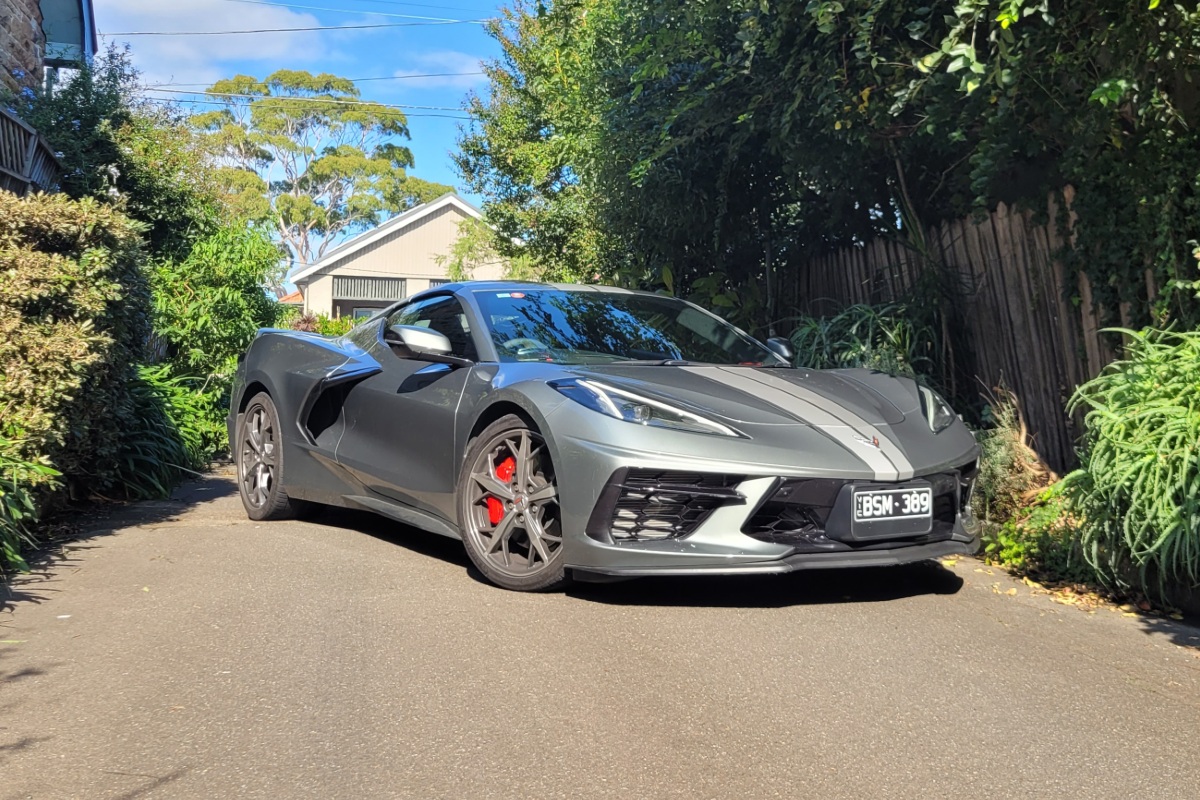
What is it?
The Chevrolet Corvette is an American icon – and it’s finally available in Australia. This is the eighth generation of the Chevy sports car and it’s a radical departure from the previous seven models, because the engine is now in the middle of the car instead of the front.
That positions the Corvette as a ‘budget’ supercar, a cheaper alternative to the likes of an Audi R8, Lamborghini Huracan and Porsche 911. But it’s also a classic American sports car, with a big-capacity V8 engine making an old-school growl.
While it may be very different to what came before it, this new Corvette retains a family resemblence with the same aggressive stance and purposful lines. Interestingly, the design was overseen by an Australia, head of General Motors Global Design, Mike Simcoe. For those with a passion for Holden will remember Simcoe as the man credited for reviving the Monaro with the Commodore Coupe concept and heading the local design office during its glory days in the early 2000s.
GALLERY: Chevrolet Corvette Z06
One important element to remember with the Corvette C8 is it’s not a local conversion, but a factory-built right-hand drive model. It comes from the same, famous, Bowling Green, Kentucky factory that all Corvettes are carefully made in.
Originally Holden was going to sell the Corvette but with General Motors deciding to shut the brand down, it instead comes through the GM Specialty Vehicle showrooms.
Initially it’s available in the coupe bodystyle, which actually features a Targa-style roof as standard, but this is just the beginning with the convertible and other models set to join over time.
Does it have any racing pedigree?
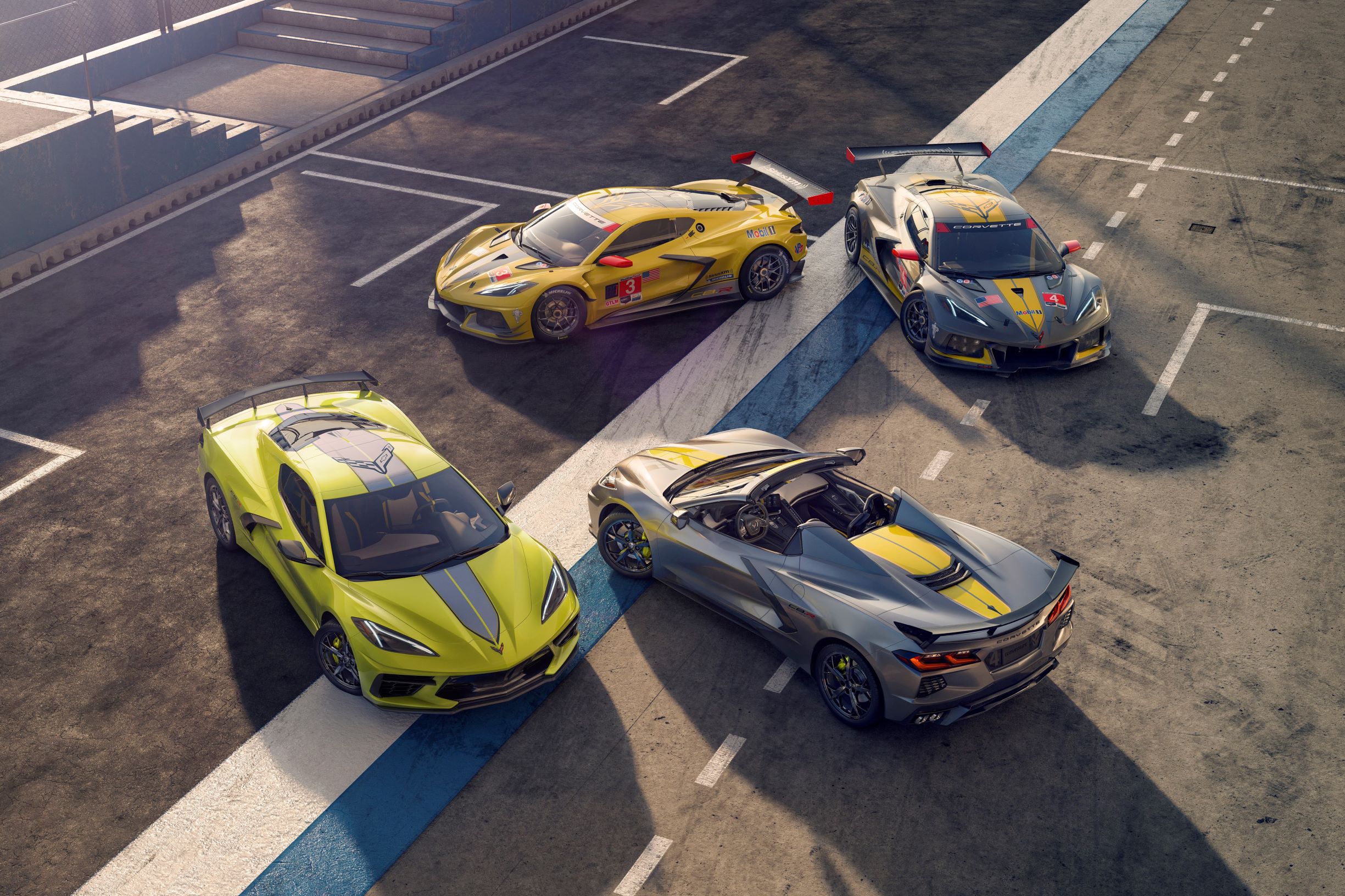
Chevrolet has been racing the Corvette since the beginning and that’s continued with the C8. In recent years the Corvette has been a staple in sports car racing, both in the USA and Europe – specifically at Le Mans.
This has pit the Corvette against the likes of the Porsche 911 and Ferrari 488, which is one of the reasons why Chevrolet decided to move the engine to the middle so it could compete with the Euro opposition in the showroom as well as on the racetrack.
While this is the standard Stingray model, a more track-focused Z06 is coming in the not-too-distant future, which will get a race-style, high-revving engine and enhanced handling.
The timing of the Corvette’s arrival in Australia is ideal for Supercars too, providing GMSV with a performance hero model as it switches from ‘Holden Motorsport’ to ‘Chevrolet Racing’ for all of its local on-track activities with the introduction of the Gen3 Camaro (which isn’t sold here).
What’s under the bonnet?
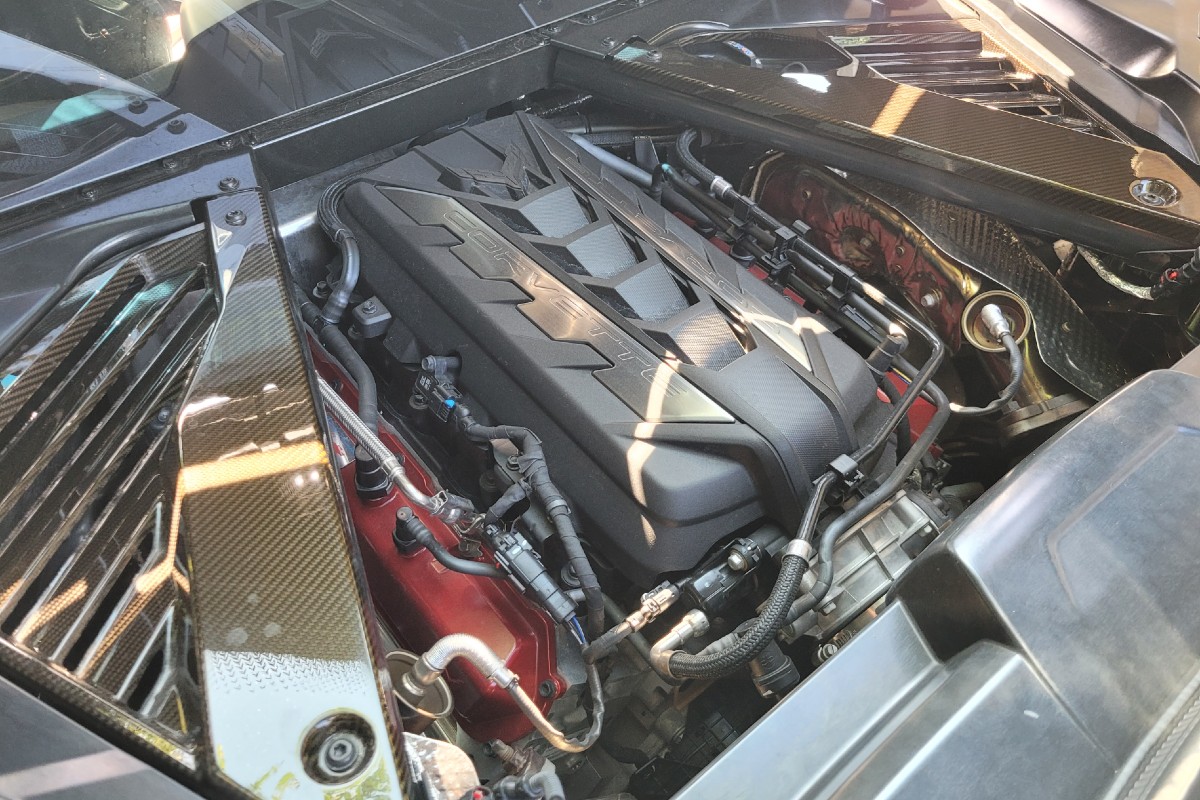
Despite all the obvious supercar style about the Corvette, power comes from Chevrolet’s LT family of V8 engines. Specifically this is a 6.2-litre pushrod V8 designed for the C8, which makes 369kW of power and 637Nm of torque in its local specification.
All local Corvettes come standard with the Z51 Performance Package (which is optional in the US) which adds bi-modal exhaust, amongst other things that we’ll detail in a moment.
While it may miss out on turbochargers and fancy hybrid systems like many of its would-be rivals, the Corvette doesn’t need them. The V8 provides both awesome performance and noise, pinning you back in your seat when you slam your right foot down and making a fantastic mechanical roar as it does so.
The V8 is paired to a new Tremec-built eight-speed dual-clutch transmission that’s another leap forward for the ‘Vette, leaving the manual gearbox in the past in the name of faster, more consistent shifting. First gear is deliberately “very low” according to Chevy, in order to help its launch times, while second through sixth are tightly packed for better twisty road or track performance, while seventh and eighth are designed for cruising and saving fuel.
It works too, because the Stingray may be the ‘entry-level’ model in the range, but it can reportedly run 0-100km/h in just 3.5 seconds.
How does it handle?
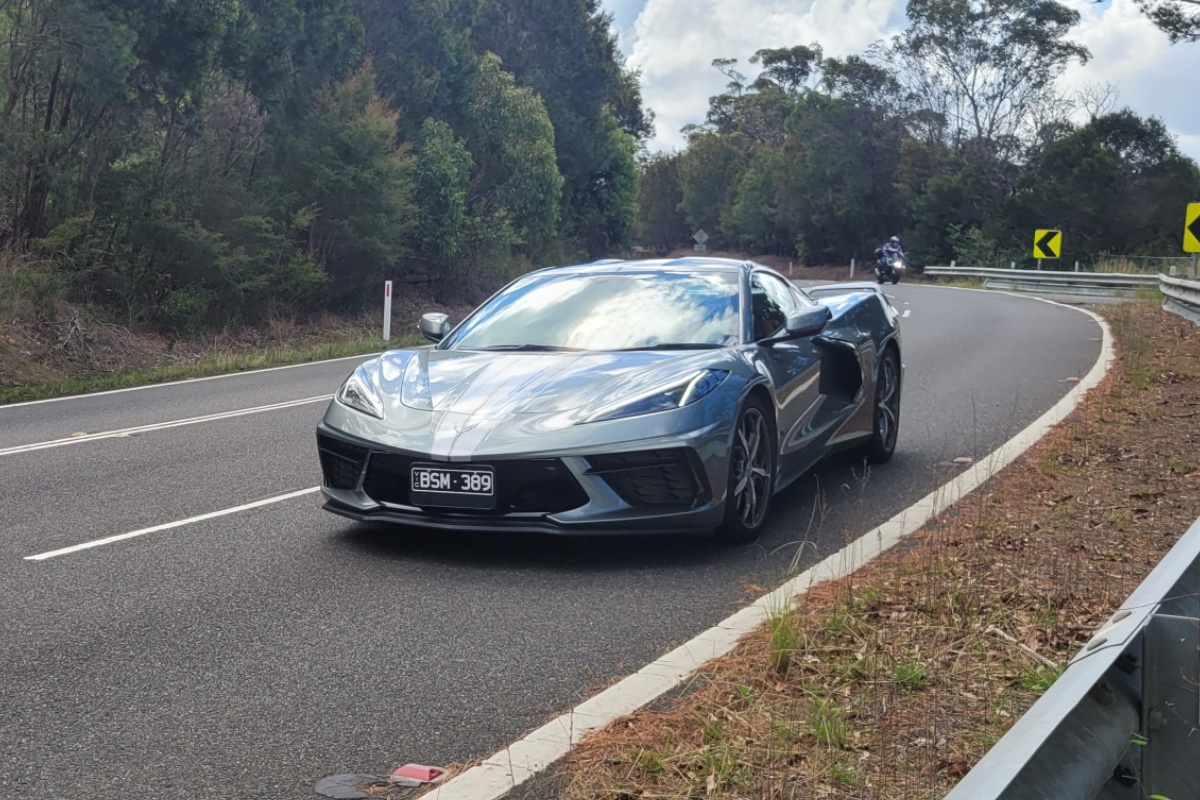
This was the biggest question that was running through my mind when I slipped behind the wheel of the Stingray. After years of waiting the Corvette is finally in Australia but the switch to the mid-engine layout means expectations are high but there’s no preconceptions based on any other previous Corvette or similar model, because there’s nothing else really like it.
The good news for Chevy fans is the Corvette shines on the road – whatever road. It’s a remarkably easy mid-engine car to drive, unlike some that can feel difficult to live with around town and in traffic.
It helps that there’s a variety of driving modes to choose from – Tour, Sport, Track and custom – so you can tone down the engine response, exhaust note, suspension and steering settings.
But it’s on the open road where the C8 really shines because the other Z51 Performance Package enhancements include magnetic ride control suspension, larger-than-standard Brembo brakes, an electronic limited-slip differential and unique front splitter and rear spoiler – all of which help the handling. These are of course, on top of the benefits that a mid-engine layout brings to a car.
The steering is sharp and direct, the brakes feel strong and consistent and the chassis is stable and gives the driver confidence to push even harder.
The staggered 19-inch front and 20-inch rear alloy wheels are wrapped in Michelin Pilot Sport 4S rubber, which also helps the driving experience by providing good grip.
Where would you most like to drive it?
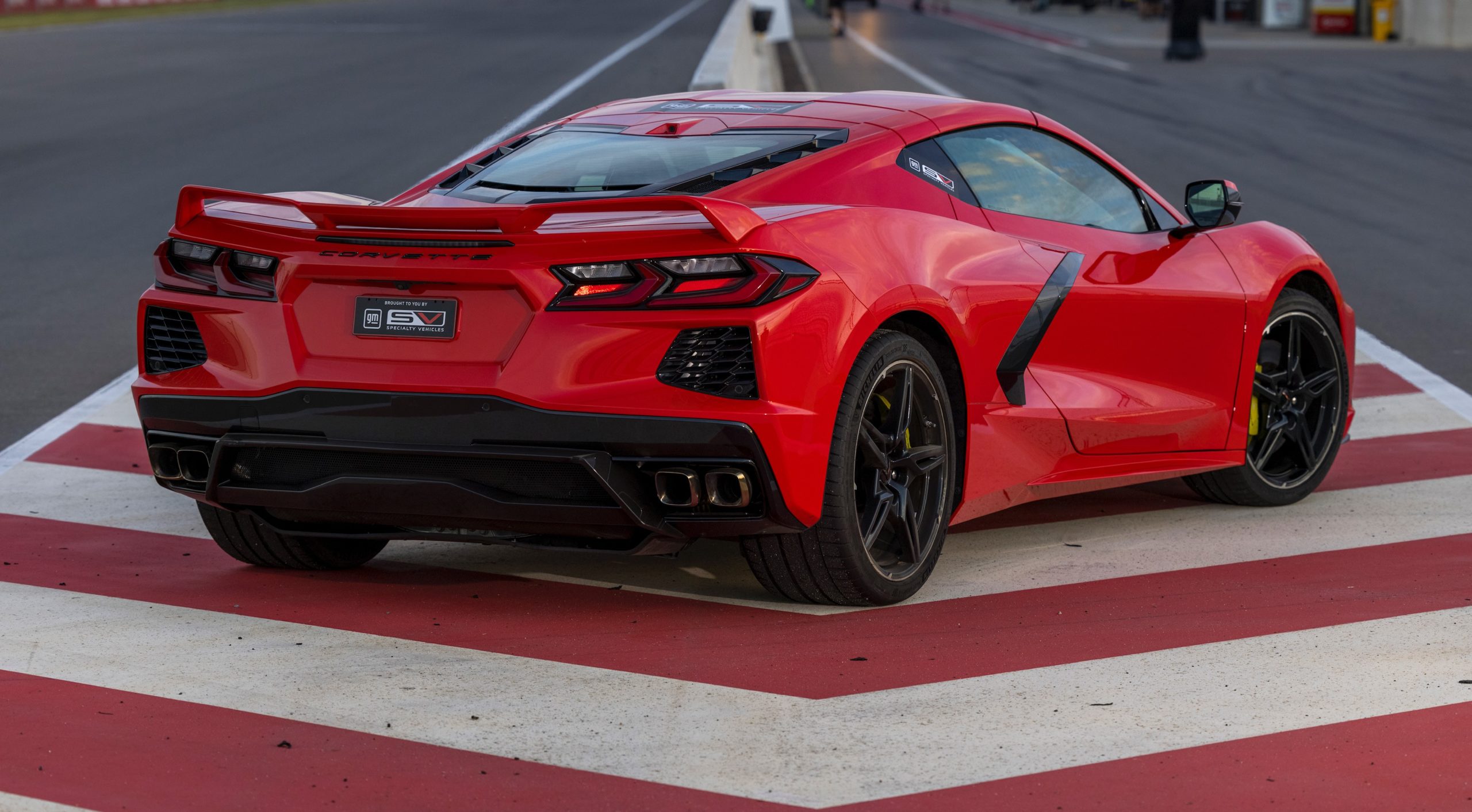
This is easy – a racetrack. The Corvette feels so quick you can’t really explore its limits legally on Australian roads. And given its heritage on racetracks around the world, it needs to be tested on one of the more challenging courses. The obvious choice is Bathurst, but either The Bend or Phillip Island would be a fantastic environment to play with the C8 and push it to its limits.
What’s the interior like?
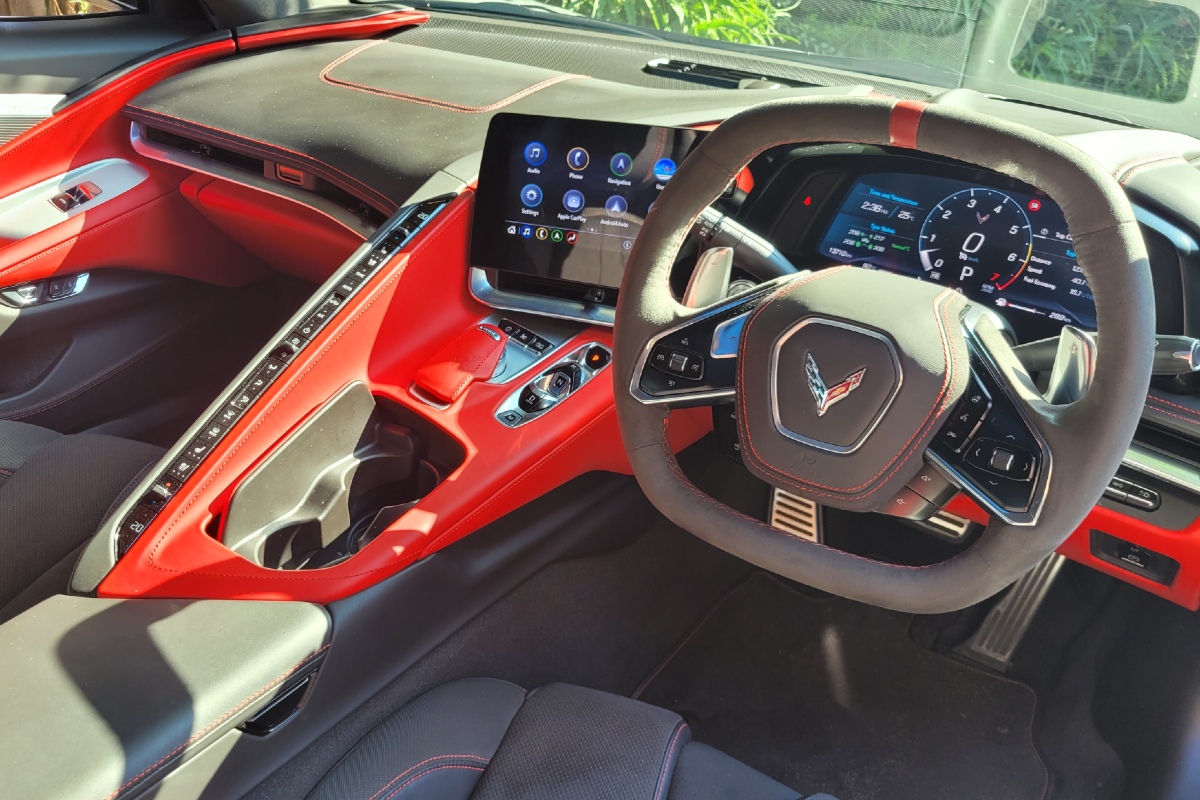
It looks unlike anything else on the market today. Interestingly the cabin might be the most evolutionary part of the design of this latest ‘Vette, following the same driver-centric layout from the previous C7 model.
As you can see in the images, the centre console is angled towards the driver, almost wrapping around the driver’s seat to make you feel like you are the centre-of-attention. The switchgear runs down the edge of the centre console, with the buttons in one big line.
Ahead of the driver sits a steering wheel that has been very squared off on the top and bottom, making it an odd shape to look at but it allows for good visibility of the digital instrument display. It also frees up some more knee room in what is an otherwise relatively small cabin.
One area that does remind you you’re driving a Chevrolet and not something more exotic is the infotainment system, which is just what you find in a Chevy SUV (or actually a Holden Equinox). It’s got good usability but the graphics are simple and it does detract from what is otherwise a special cabin.
On the flipside the Corvette features a clever rear-view mirror that not only works as a conventional mirror, but at the flip of a switch it becomes a screen that shows a clear view behind from the roof-mounted camera.
In terms of practicality, there’s a small front storage area and larger space under the rear bodywork – although because it’s so close to the engine it does get a bit hot. The rear space is designed to accommodate the removable targa roof, which is easy to manually remove and reinstall.
How much does the Chevrolet Corvette cost?
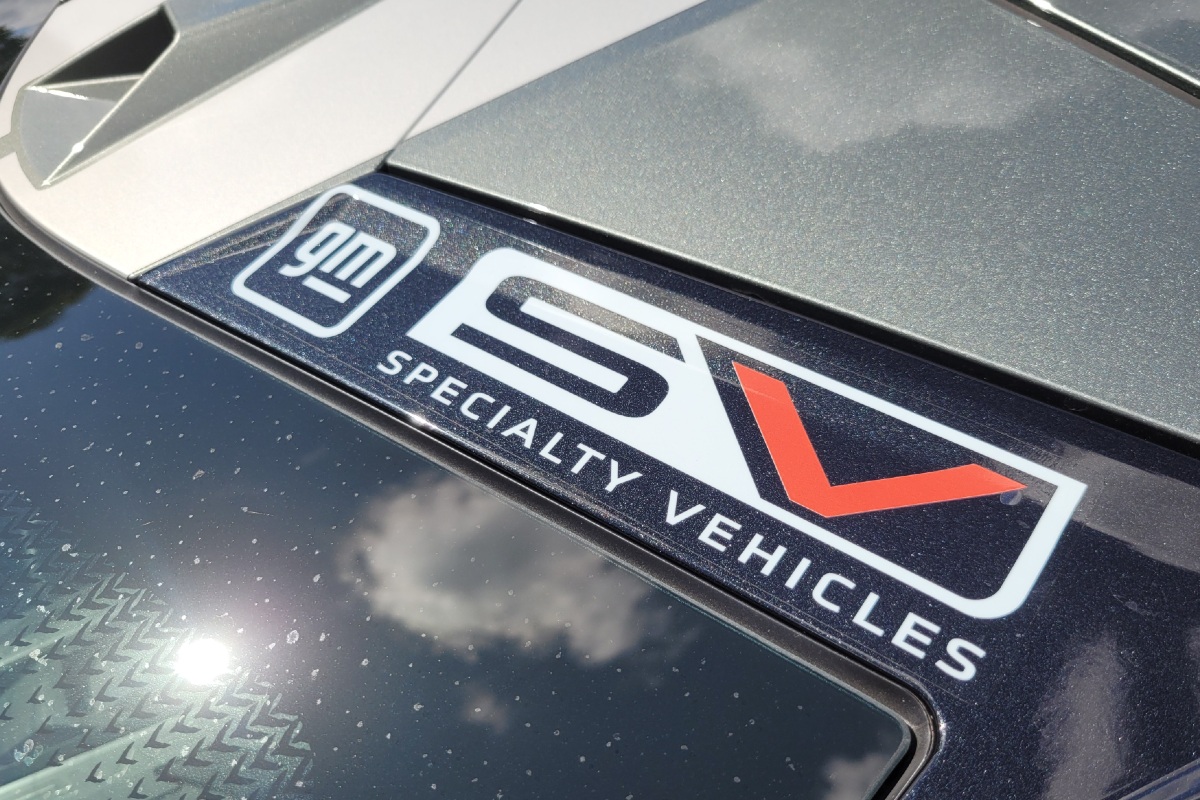
The Australian Corvette range begins at $144,990 for the 2LT, while the better-equipped 3LT we tested starts at $160,500; neither of those prices include on-road costs. If you want the convertible it will cost you an additional $15,000.
That puts the Corvette in an interesting position in terms of what cars it lines up against in the market. As a mid-engine sports car the obvious competition seems to be the Porsche 911 and Lamborghini Huracan, but other of those cost significantly more (the 911 range begins at $241,200 and the Huracan from $384,187).
So on price it actually stacks up competitively against the likes of the BMW M4 (from $155,500), Audi RS5 Coupe (from $158,800) and Jaguar F-Type (from $166,048).
Would I buy one?
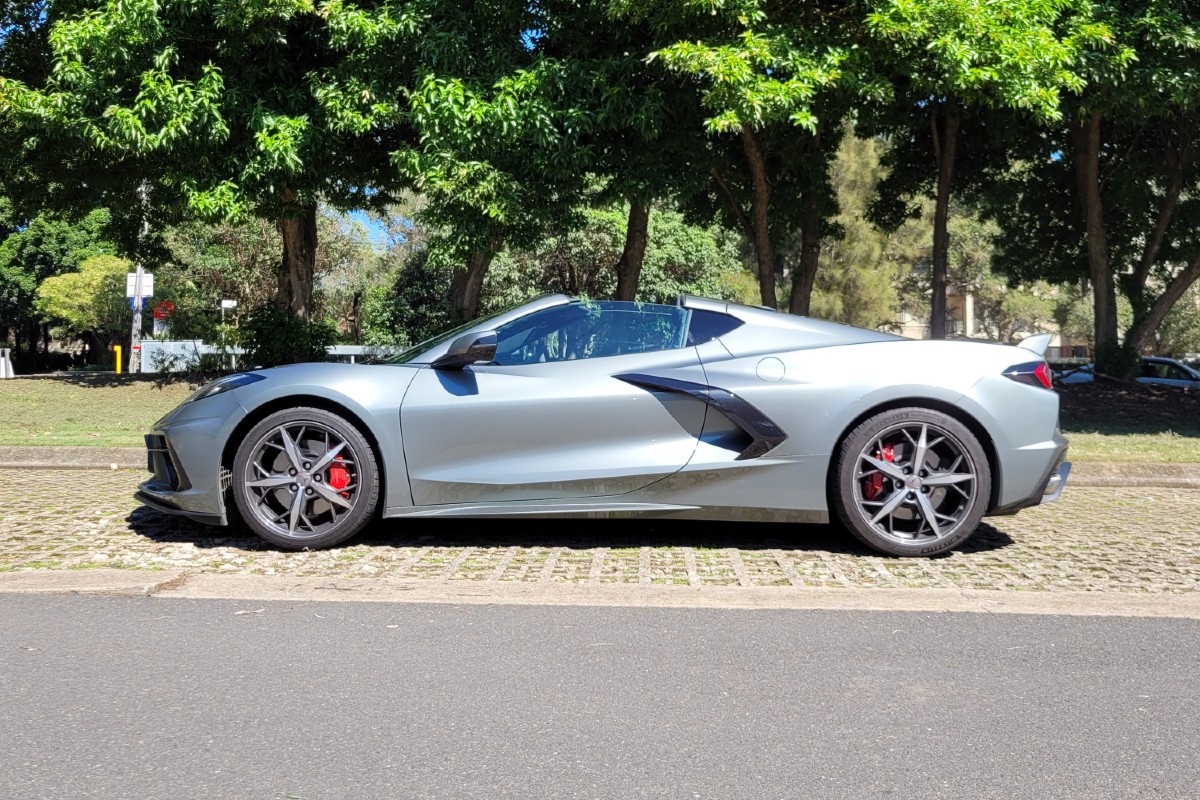
I would if I could. The first allocation of Australian-bound models sold out almost immediately and supply is constrained again in 2022. However, the Corvette is worth waiting for – in more ways than one.
It has taken decades for the American hero to arrive down under in an official capacity, but the C8 Stingray is arguably the ideal model to launch it in Australia. The switch to an all-new mid-engine layout makes it a genuine alternative to its European competitors.
Is it as refined as a Porsche or Ferrari? No, but it costs a lot less and provides just as much driving thrills, just in a different way.
2022 Chevrolet Corvette C8 Stingray price and specifications
| Price: | From $144,990 plus on-road costs |
| Engine: | 6.2-litre V8 |
| Power: | 369kW at 6450rpm |
| Torque: | 637Nm at 5150rpm |
| Transmission: | Eight-speed dual-clutch automatic, rear-wheel drive |
| Fuel use: | 13.5L/100km |
| Wheels: | 19-inch alloy (front), 20-inch alloy (rear) |
| Tyres: | 245/35 R19 (front), 305/30 R20 (rear) |
| Length: | 4630mm |
| Width: | 1933mm |
| Height: | 1234mm |
| Weight: | 1613kg |
| 0-100km/h: | 3.5 seconds |












Discussion about this post